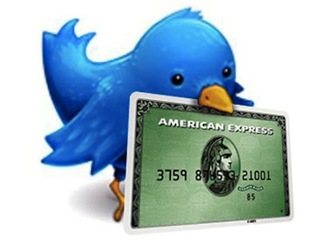Rising infertility concerns fuel growth of male-focused innovative startups
Fertility treatments are more relevant than ever; here are a few startups pioneering new solutions
Read more...
Twitter has been busy rolling out new products this summer and the latest effort is a new way for businesses to target their Promoted Tweets and Promoted Accounts. Twitter's Product Management Director Kevin Weil stated in a blog post that Promoted Tweets and Accounts target users that share interests with your current followers and this change will allow advertisers to explicitly identify the interests that they want to reach.
With more than 350 categories to choose from, such as animation, gardening and science, Twitter will show the promoted content to users who have similar interests to that account’s followers.
So for advertisers this boils down that they are no longer limited to reaching one specific subset of users, and can direct their ads at multiple audience segments.
Advertisers can also target the followers of a specific @ username as well as finding those who have similar interests to a person, brand or other handle.
Twitter has had a lot of desire to improve the way people advertise on the service and leverage the troves of data that is collected.
Twitter is also taking this opportunity to announce changes for the auctions that determine which promoted content is displayed on a users interface. Twitter decided to reduce the minimum bid in those auctions from 50 cents to 1 cent -- that can make huge difference in letting in more small businesses and allow people to run more and diverse campaigns across the site.
If advertisers do end up liking Twitter’s platform, these new opportunities and options could really pay off. Ideally, Twitter wants to be a head-to-head competitor with Google’s AdWords and show a lot of people a wide range of ads -- which it has not been able to do up to this point.
This is all coming out a mere day after Twitter announced its three product categories for third-party product users.
Brands, publishers, nonprofits, governments and others have products that help them engage with and understand their audience so they can flourish on Twitter, many of which can be spread to more companies and users.
For this new service, Twitter is launching with 12 partners: Attensity, Crimson Hexagon, Dataminr, DataSift, ExactTarget, Gnip,HootSuite, Mass Relevance, Radian6, SocialFlow, Sprinklr and Topsy.
Companies that have a unique product fitting into at least one of the product verticals can apply for verification through the company's Program Requirements, and then fill out the Program Application.
After recently releasing a new version of its API, bringing more regulation to third-party apps, a lot of companies have grown agry with Twitter and this may be a way to trickle back some of those avenues and support.
In the announcement, the company’s business development manager Doug Williams notes that “this is just the beginning” and that Twitter is at additional companies and expansion in this program.
Twitter has been getting quite choosey with its third-party information lately.
The new guide explained the lower rate limits, authentication, and certification requirements it was putting in place for those using its service and said it will require that large application get direct approval from the company before activating.
What happens if a developer uses the Twitter information for an app or tool on their site without this clearance, it looks like Twitter could just shut off the information running to the company.
But there is some time to work out the kinks and clear up and confusion since Twitter won’t enforce its crackdown until an app using its service doubles its user base.
Going forward, applications that have more at least 100,000 users will have to work directly with Twitter on their product, policies and service agreement. Those that already have more than 100,000 user can only grow to 200% of their current size before they will contact Twitter.
Recently, Twitter dropped LinkedIn from its application extension family because Twitter felt that LinkedIn was using its information and service as a main source of its traffic numbers and growth.
Twitter VP of Product Michael Sippey laid out which types of applications Twitter likes, in a blog post. He pointed to “traditional Twitter clients” such as Tweetbot and Echofon and problem children that Twitter was not happy with. Essentially, Twitter is saying that if their service is a major component of your business, brace your self for some serious change.
Fertility treatments are more relevant than ever; here are a few startups pioneering new solutions
Read more...After a trial in select locations, Elon Musk is expanding its fee to more X users
Read more...The tools include content such as educational videos, recipes, and daily nutrition tips
Read more...Startup/Business
Joined Vator on
Twitter is an online information network that allows anyone with an account to post 140 character messages, called tweets. It is free to sign up. Users then follow other accounts which they are interested in, and view the tweets of everyone they follow in their "timeline." Most Twitter accounts are public, where one does not need to approve a request to follow, or need to follow back. This makes Twitter a powerful "one to many" broadcast platform where individuals, companies or organizations can reach millions of followers with a single message. Twitter is accessible from Twitter.com, our mobile website, SMS, our mobile apps for iPhone, Android, Blackberry, our iPad application, or 3rd party clients built by outside developers using our API. Twitter accounts can also be private, where the owner must approve follower requests.
Twitter started as an internal project within the podcasting company Odeo. Jack Dorsey, and engineer, had long been interested in status updates. Jack developed the idea, along with Biz Stone, and the first prototype was built in two weeks in March 2006 and launched publicly in August of 2006. The service grew popular very quickly and it soon made sense for Twitter to move outside of Odea. In May 2007, Twitter Inc was founded.
Our engineering team works with a web application framework called Ruby on Rails. We all work on Apple computers except for testing purposes.
We built Twitter using Ruby on Rails because it allows us to work quickly and easily--our team likes to deploy features and changes multiple times per day. Rails provides skeleton code frameworks so we don't have to re-invent the wheel every time we want to add something simple like a sign in form or a picture upload feature.
There are a few ways that Twitter makes money. We have licensing deals in place with Google, Yahoo!, and Microsoft's Bing to give them access to the "firehose" - a stream of tweets so that they can more easily incorporate those tweets into their search results.
In Summer 2010, we launched our Promoted Tweets product. Promoted Tweets are a special kind of tweet which appear at the top of search results within Twitter.com, if a company has bid on that keyword. Unlike search results in search engines, Promoted Tweets are normal tweets from a business, so they are as interactive as any other tweet - you can @reply, favorite or retweet a Promoted Tweet.
At the same time, we launched Promoted Trends, where companies can place a trend (clearly marked Promoted) within Twitter's Trending Topics. These are especially effective for upcoming launches, like a movie or album release.
Lastly, we started a Twitter account called @earlybird where we partner with other companies to provide users with a special, short-term deal. For example, we partnered with Virgin America for a special day of fares on Virginamerica.com that were only accessible through the link in the @earlybird tweet.
What's next for Twitter?
We continue to focus on building a product that provides value for users.
We're building Twitter, Inc into a successful, revenue-generating company that attracts world-class talent with an inspiring culture and attitude towards doing business.




